The motorcycle industry is replete with modern replicas of classic machines. These days, you can buy bikes that mimic the style of vintage motos—but with hidden electronics and catalytic converters, and no oil leaks.
Period-correct old timers are becoming rarer by the day. So we need guys like Hayden Roberts: craftsmen who live and breathe classic motorcycles. He’s a British transplant living in Santa Paula, California, where he repairs and restores old British iron under the Hello Engine banner.
His latest project is a showstopper. Built for the Born Free show, it’s a Triumph desert sled that’s dripping with patina and could have been built in 1965—except that it’s not technically an original model.
Hayden gives us the skinny: “I’d been collecting parts over the years and wanted to build the desert bike I’d always hoped to find stashed in a shed someplace. The idea was that every piece had to be original, no reproductions, and was there to serve a purpose: a race ready desert bike, no filler.”
“Maybe I got a little too deep into it, down to the logo on the bolt heads having to be era correct. But I wanted it to look like it was built 54 years ago—when in reality I finished it last Sunday!”
Hayden’s Triumph is a ‘bitsa’ like no other: a textbook example of how to build a desert sled. The frame’s a 1964 TR6 unit—but it’s not stock. Hayden braced it at the steering head, strengthened it, and raked it out an additional three degrees for stability. The seat loop was bent up too, and the rear section de-tabbed.
At Iron Cobras Fabrication, Even Scott added a chromoly brace to the swingarm to strengthen it further. The rear shocks are longer-than-stock Girlings, with the stiffest resistance Hayden could find (identifiable by the green stripes on the springs).
“The front forks are heavily modified,” Hayden tells us, “as the original equipment was basically a pogo stick.” This setup uses 1950s Triumph fork sliders with modded internals. Hayden added a shuttle valve, lengthened the dampening rods, added new bushings, and replaced the springs with heavy-duty progressive items.
The result is more travel and better cushioning over rough terrain. A fork brace was fitted too, to mitigate flex in lieu of a front fender.
For wheels, Hayden started with a late 50s to early 60s BSA Goldstar front, chosen because those were lighter than the Triumph offerings from that era. The rear is a mid-60s Triumph wheel, paired with a Webco overlay sprocket. The front tire is an impossibly rare 19×4” Avon Trials Supreme, and the rear is an 18” Avon Gripster from the same era.
Hayden tells us that the engine work alone could fill an encyclopedia. According to the VIN, the motor’s a 1965 650 cc TR6—“but as you can see, it’s a motor Triumph never made.”
The back half of the timing cover was slashed off, and the rear of a pre-unit 1950s motor welded in. “This enables you to run a Lucas competition magneto instead of the stock alternator set up,” Hayden explains.
“Magnetos get a bad rep but a well serviced mag will last 50-plus years. If they were good enough for fighter planes, they’re good enough for an old dirt bike.”
To get the conversion to work, he had to add the magneto gear into the interlocking gear sequence in the timing case. Apparently, there’s no room for error: “Too far apart and the teeth on the gears won’t mesh; too close and they won’t turn.”
This setup also features a Bonneville crank with a light flywheel, a Johnson mild race cam, and a small valve cylinder head from a 1963 TR6. It’s been converted to a ‘breather’ configuration—meaning that the motor vents via the crankcase into the primary (something Triumph themselves would start doing in the 70s).
Hayden had a set of N.O.S. Webco valves and springs, so he added those too, along with a set of forged 10:1 pistons. “The motor turned out really rev happy and is a ton of fun all through the range,” he says.
Even the ‘Q’ style air filter has a story. “Info on these is as scarce as the filters themselves,” says Hayden. “I’ve been told they were made in either New Mexico or the SF valley by a guy named Bobby Jay. I’ve never seen an advertisement for one, and you just don’t see them come up for sale often.”
“These use a metal gauze and a replaceable piece of filter material. It replaces the stock left side cover and battery tray and tucks in out of the way. For me it’s the best looking of the air filters, like it belongs there.”
The twin exhausts are early 60s Bud Ekins pipes. Hayden wanted a system that exited on the left, so he could show off the magneto conversion on the timing side.
Then there’s the impressive finishing kit. The seat is an original Bates race seat, hard-mounted to the frame for extra strength. Since it’s not hinged any more, Hayden had to modify the oil tank with a side filler.
The controls consist of Stelling and Hellings bars, and 1960s Camco grips with a leather ‘donut’ on the throttle side to prevent blisters. Hayden ran all the cables through lengths of braided fuel line—“an old desert trick that protects them from getting kinked if you drop the bike, or catch it in the giggle weeds.”
Hayden’s dubbed his sled the ‘Desert Fox,’ a nickname given to racers like Bud Ekins and Larry Berquist back in the day. It’s portrayed by a hand-painted fox graphic on the fuel tank—a riff on the old leaping tiger logo of the 50s.
As for the rest of the tank, that’s an original too. It’s from a 1965 TR6, and still wears its Burnished Gold over white paint, and Robin Egg Blue pinstriping. (The decal on the oil tank is straight out of the 1963 Big Hare run).
The patina and shed-built vibe conceal just how technically awesome this Triumph is. Back in the day, it would have been cutting edge. But right now, it’s a lovingly constructed reminder of the golden era of desert racing.
Long live the Desert Fox!
Hello Engine | Facebook | Instagram | Images by Jesse Carmody
from Bike EXIF https://ift.tt/2XtJMoI
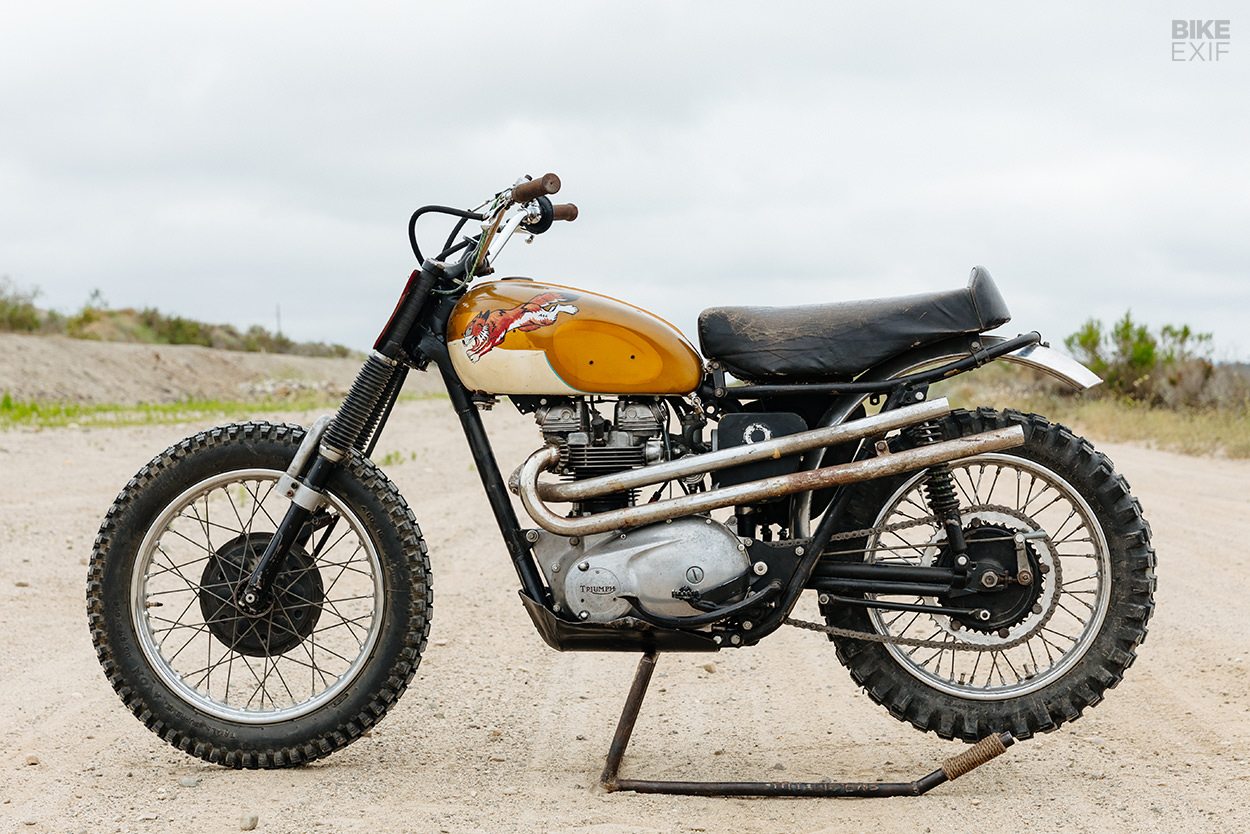
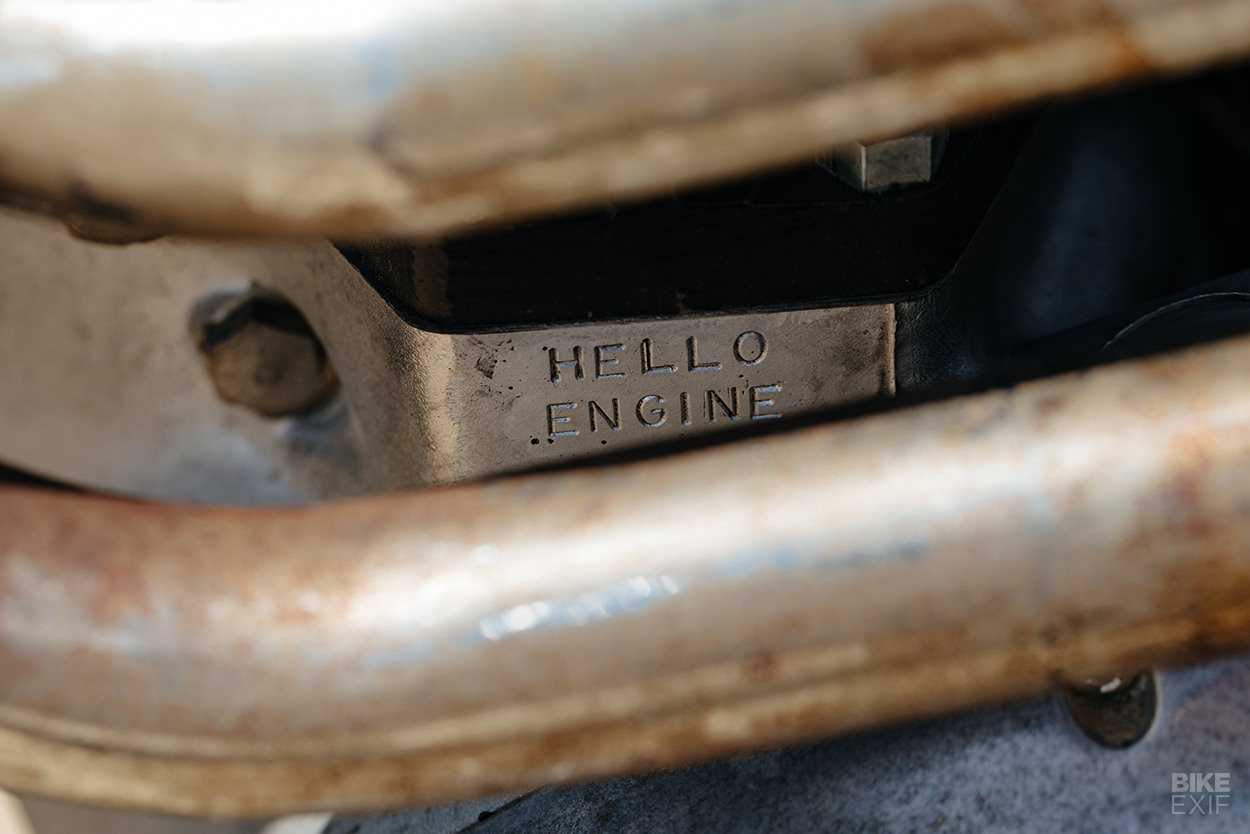
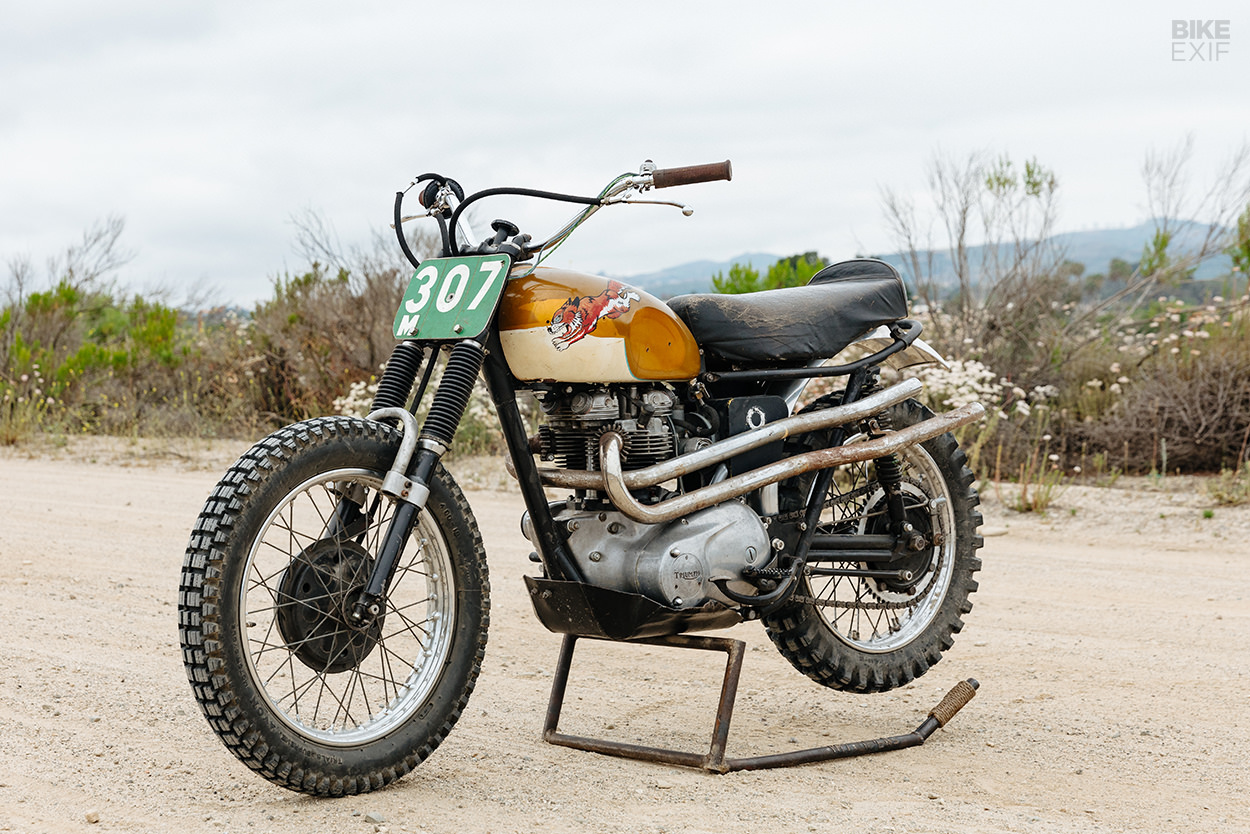
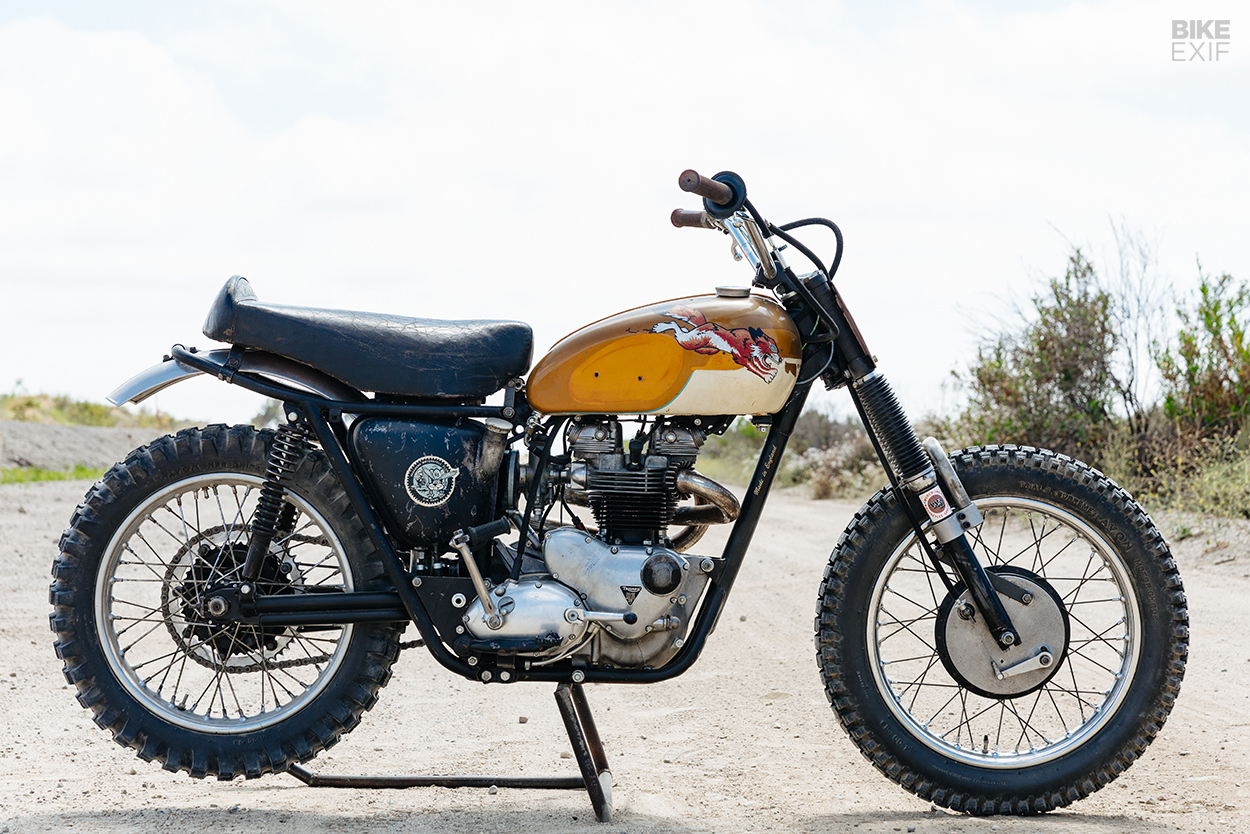
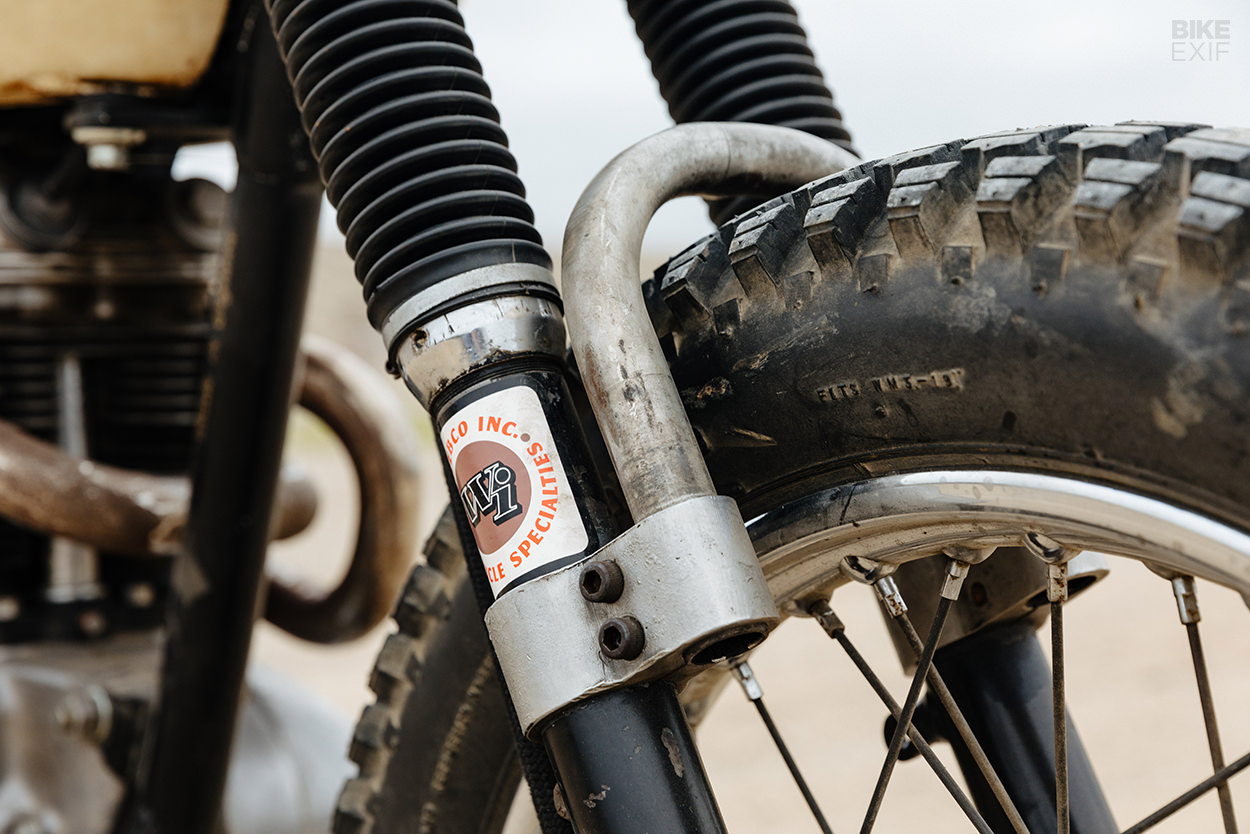
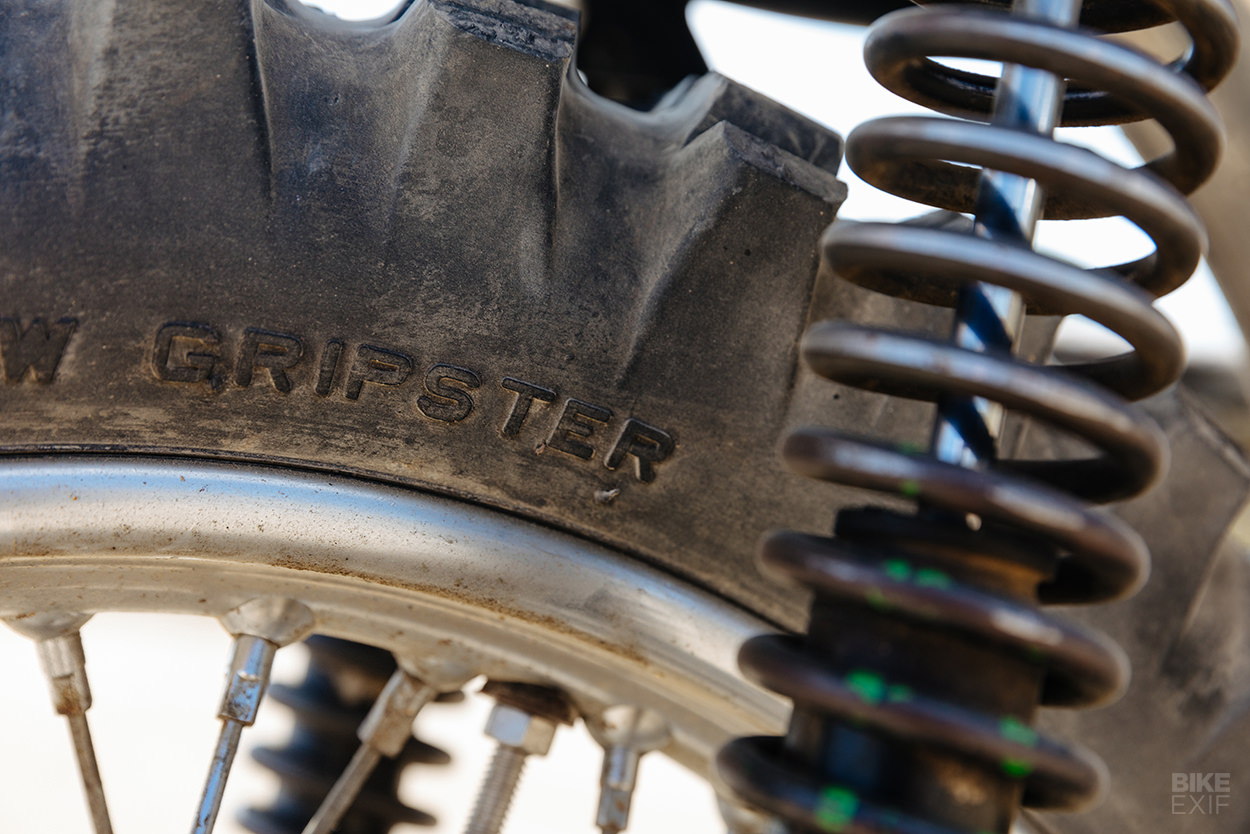
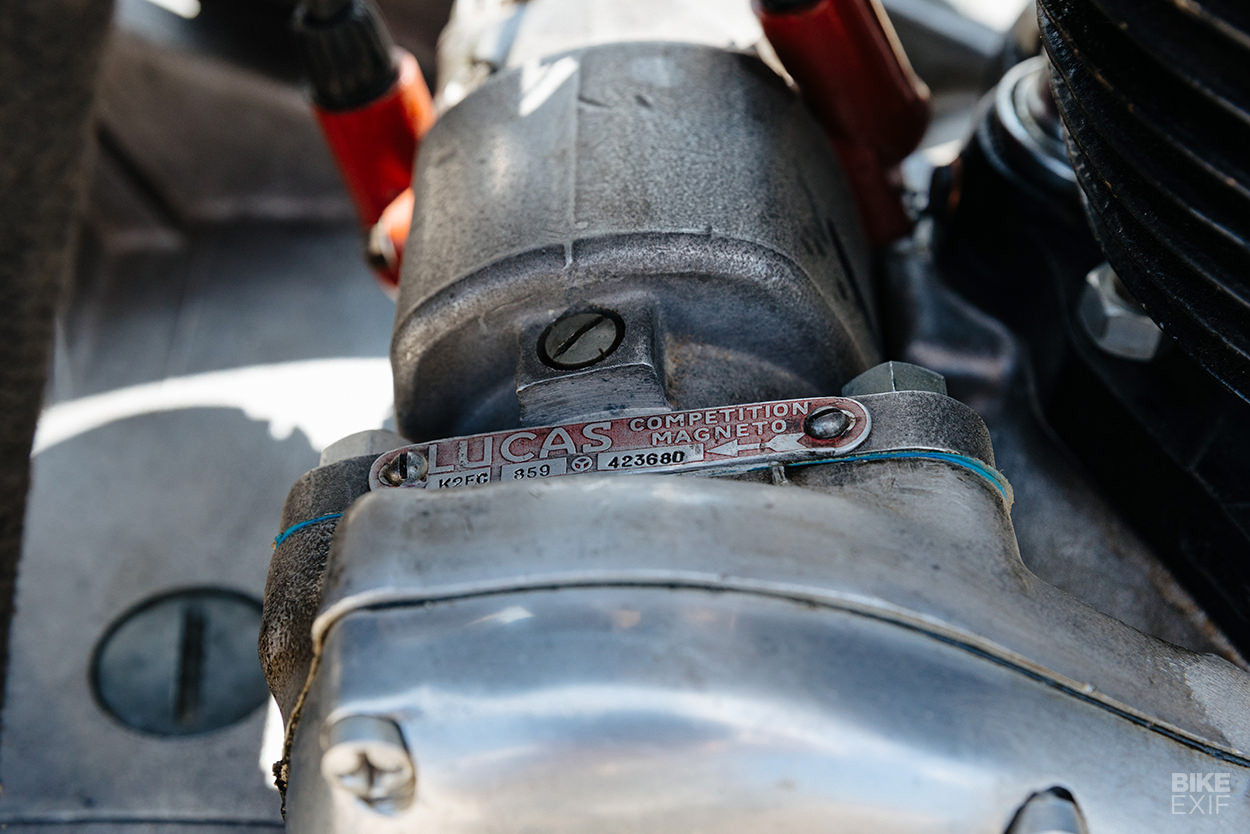


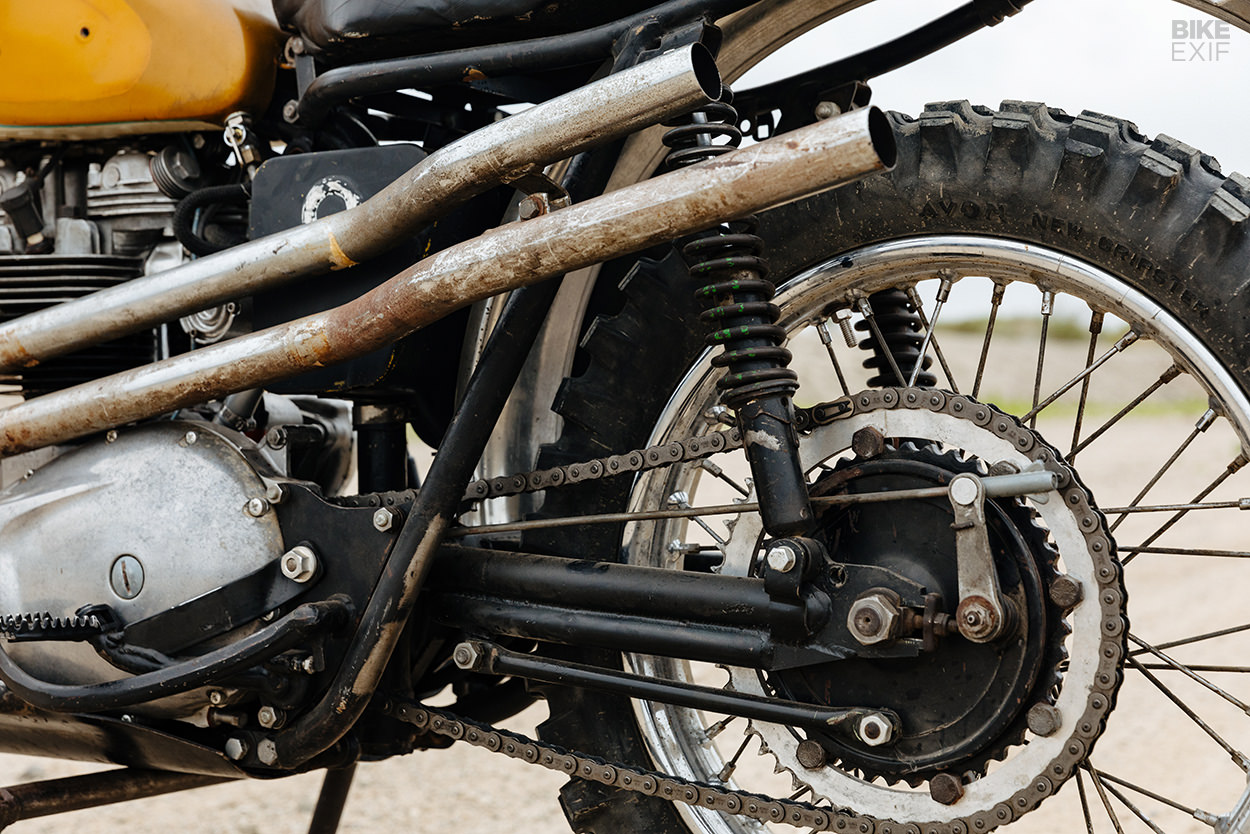
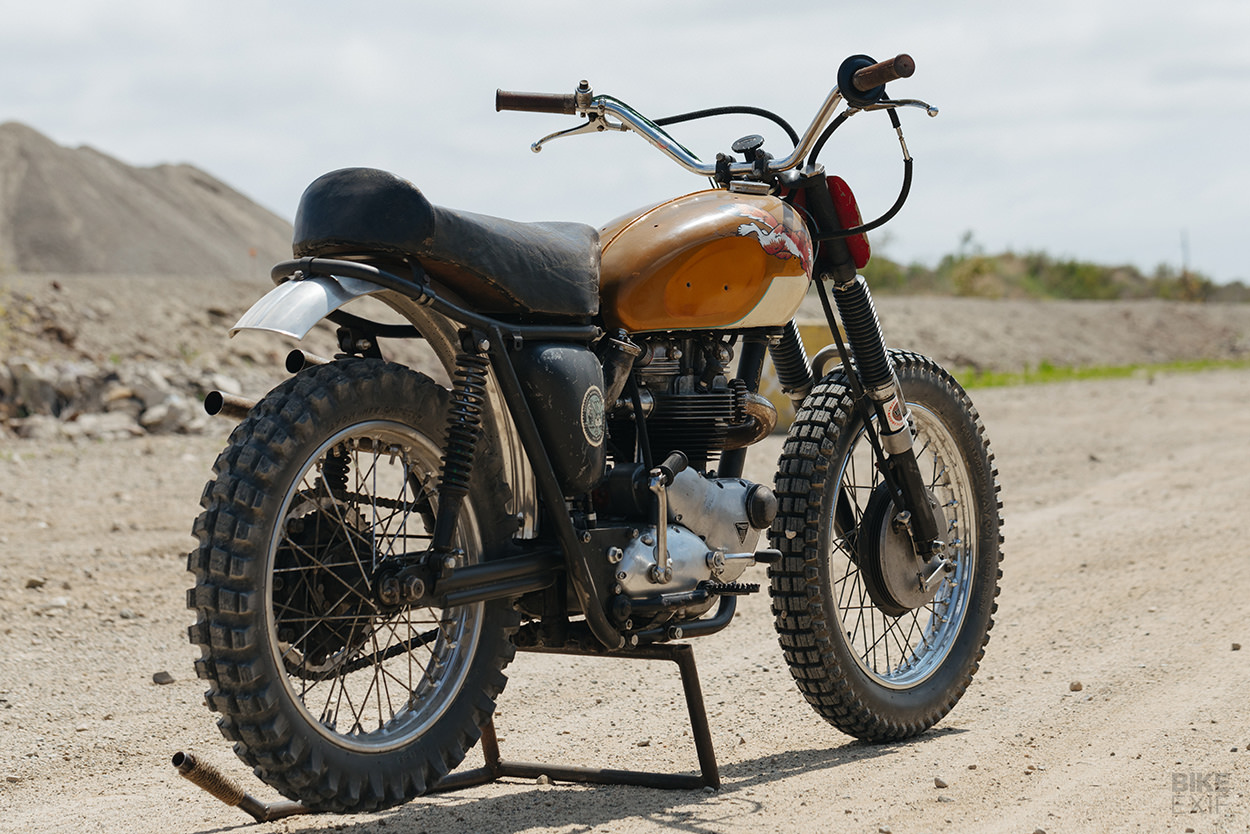
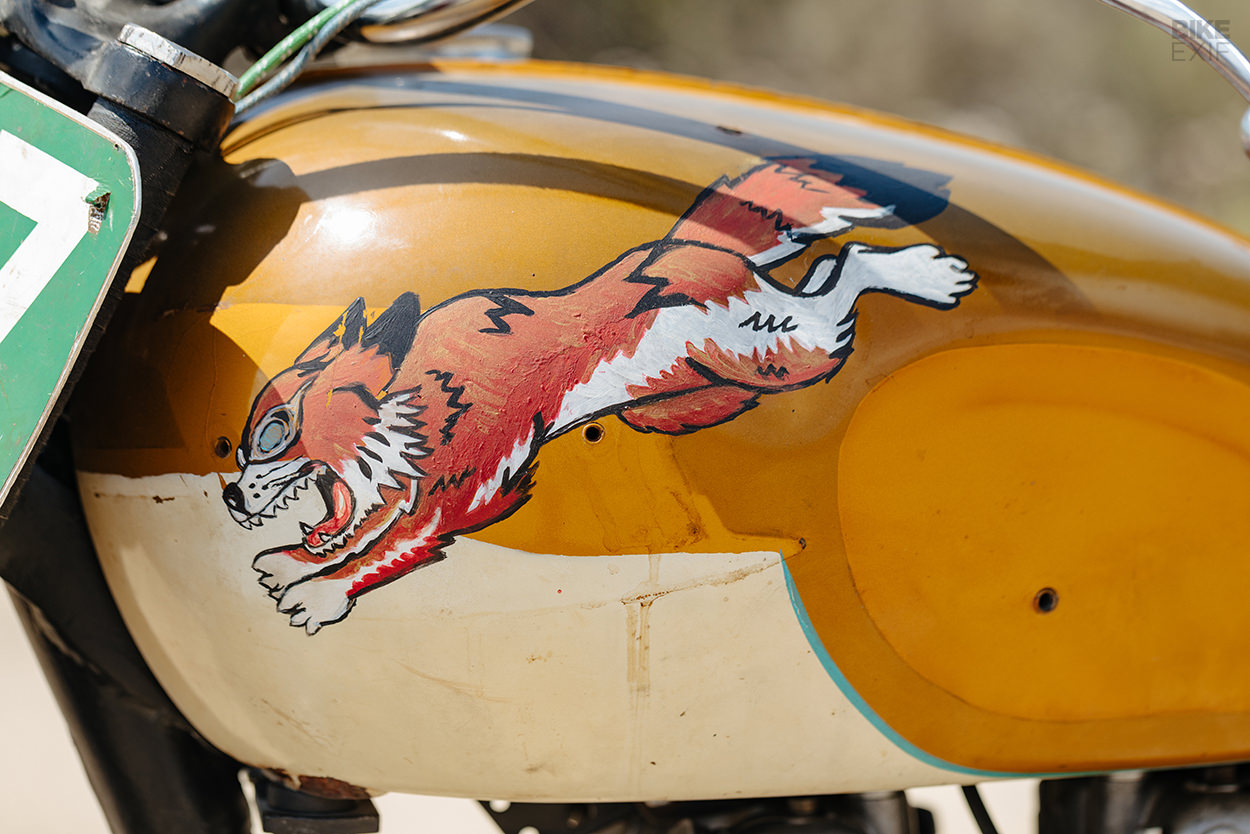
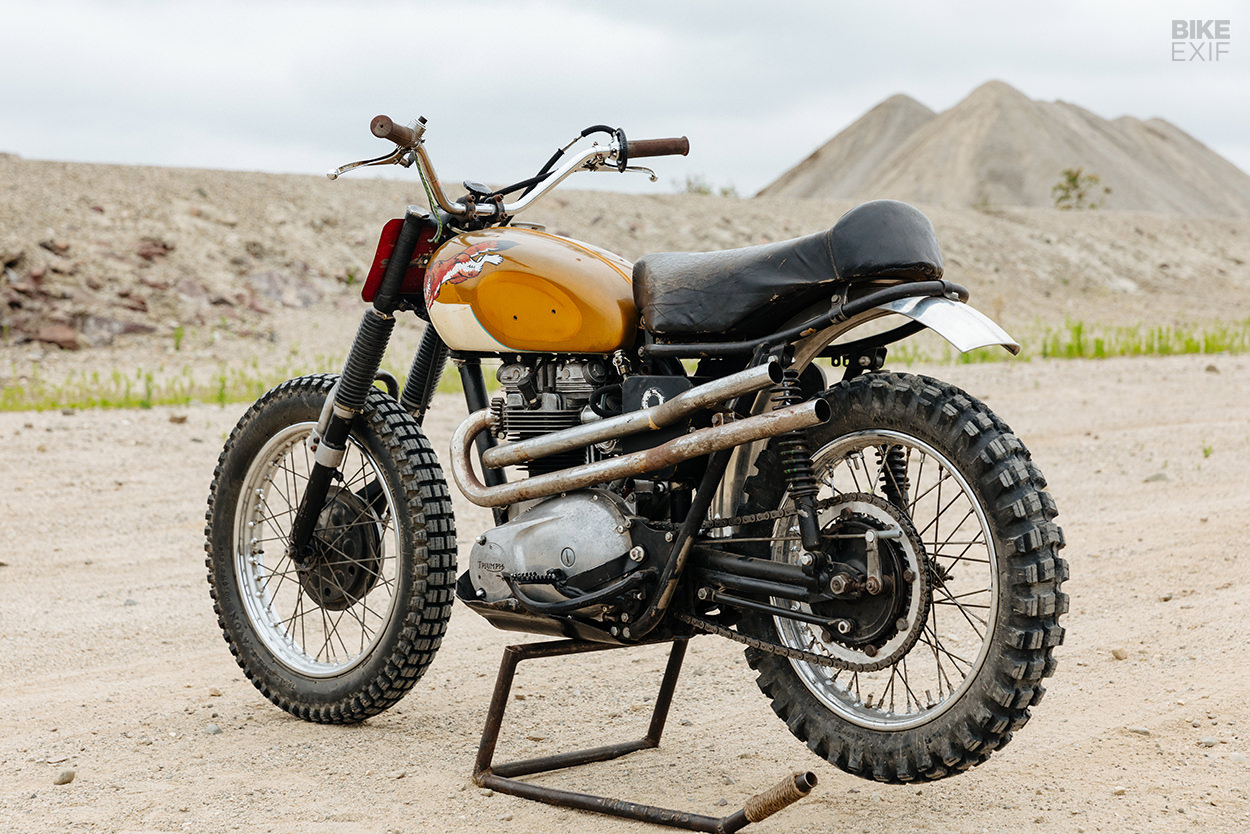
No comments:
Post a Comment